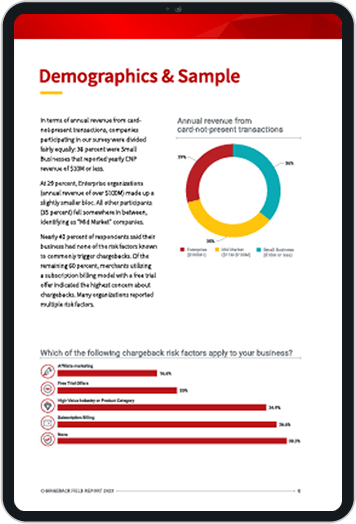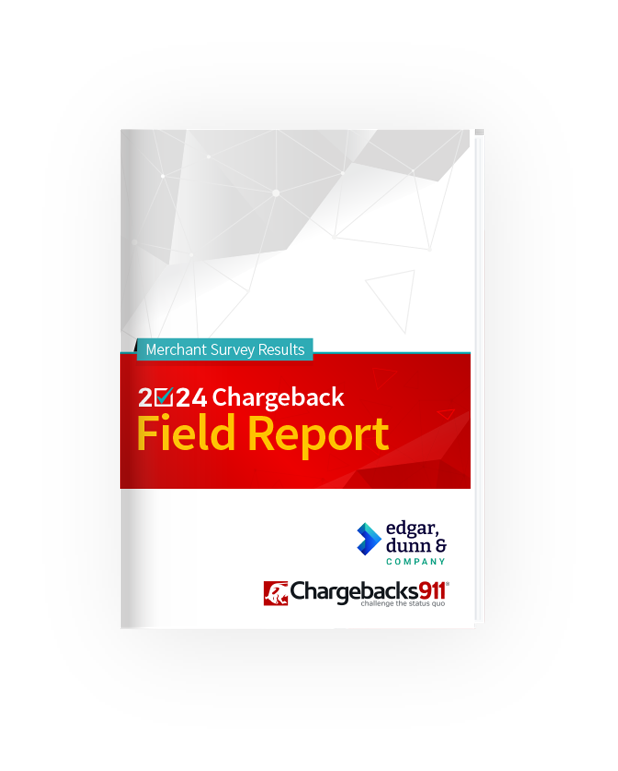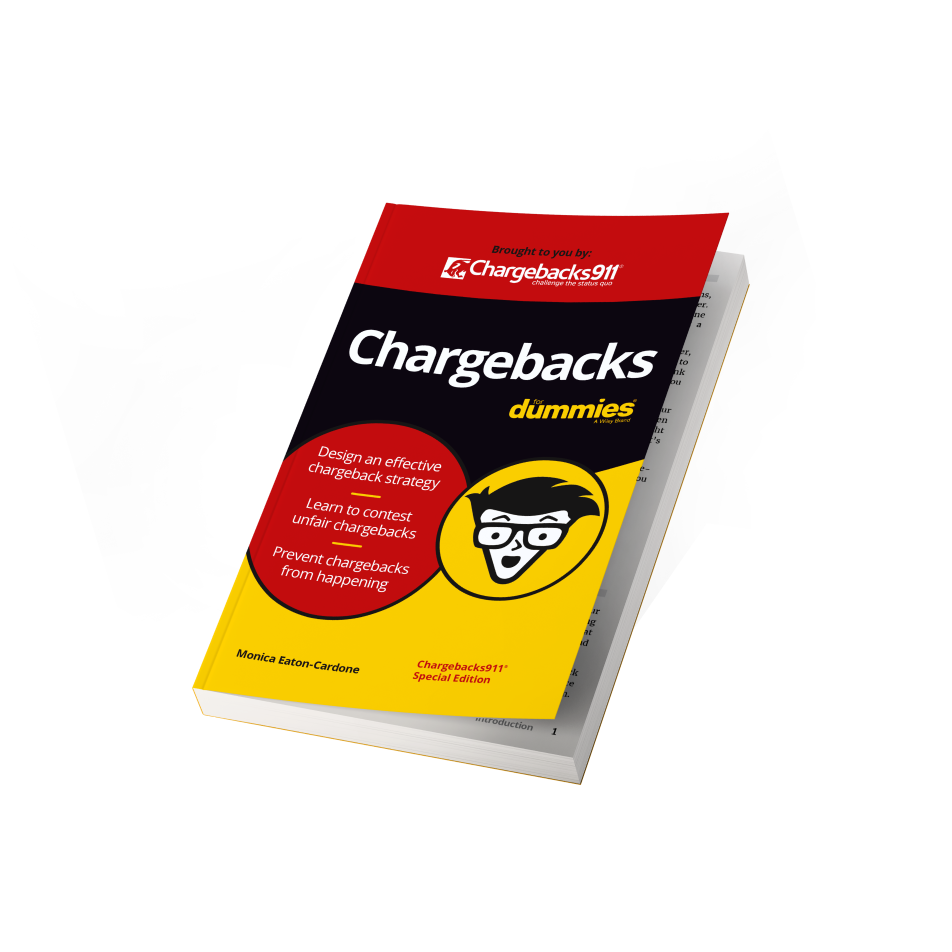TC40 Data: Limited Uses for Chargeback Reduction, but Valuable in Other Ways?
Every merchant wants to uncover “the secret” to eliminate chargebacks, once and for all. Some even believe they’ve found it in the form of TC40 data. But, are they searching in the right place?
The truth is that TC40 data has far more to do with fraud than it does with chargebacks.
Not only is this data not intended (or likely) to help you prevent chargebacks, but it doesn’t even focus on them in the first place. So, what is TC40 data? What’s the reason for all the confusion surrounding TC40 reporting?
Recommended reading
- Merchant Identification Numbers | How Do MIDs Work?
- Why is My Bank Account is Under Investigation?
- Issuer Declines: 7 Reasons They Happen & How to Fix Them
- What is an Issuing Bank? The Issuer's Role in Payments
- What is an Acquiring Bank? The Acquirer's Role in Payments
- How Debit Payment Processing Works: Costs, Rules, & More
What is TC40 Data?
- TC40 Data
A TC40 data claim occurs when a customer makes a fraud claim against a transaction. The issuer generates a claim, then transmits it to the merchant’s acquirer, as well as to Visa, as a means of noting all reported fraud incidents tied to the merchant.
[noun]/tē • cē • fôr • tē • dā • tə/
In short, TC40 data is used to give banks and card networks a head’s up if there’s an outstanding fraud claim made against a transaction you conducted. It’s one of the key indicators used to determine your overall fraud risk.
Getting a bunch of TC40 reports filed against you suggests that you’re not conducting due diligence regarding fraud detection. You’re letting too many scammers get away with committing fraud.
Exact calculations and thresholds are not published. But, you can take it as a general rule that, the more fraud claims against your transactions, the more likely your acquirer is to view you as “high risk.” If this happens, the bank may refuse to accept payments on your behalf.
The data report will also contain internal communication data shared between banks and credit card companies. This could make interpreting chargeback data less complicated for you. It’s not likely that you’ll ever see the report, though. It's also not likely that you’ll immediately know that a TC40 report was filed against you (more on this later).
All TC40 reports include data elements like the merchant ID, banking info, and fraud claim details. Visa collects TC40 data via its Risk Identification Service (RIS), while Mastercard uses the Fraud and Loss Database (FLD).
What Data is Included in a TC40 Report?
A standard TC40 data claim report includes a few key elements. Merchant identification information, banking information are standard components. The same applies for transaction details, such as where the transaction took place, items purchased, etc.
TC40 Report
- The issuing bank that reported the fraud
- The acquiring bank that processed the transaction
- Your merchant ID, name, and location
- Your merchant category code (MCC)
- The date and time of the reported transaction
- The dollar amount of the transaction
- Partial card number, name, and (in some cases) contact details
- The chargeback reason code
- Authorization details, showing if the transaction was approved or declined
- Information on whether a dispute has been initiated
- Whether the transaction was card-present or card-not-present
- The IP address, device ID, or other digital fingerprints (if available)
- Date the issuer submitted the TC40 report
Merchant Access to TC40 Data is Limited
Merchants typically won’t be given access to TC40 reports. While these reports signal the occurrence of fraud, they do not mean that chargebacks are imminent, and may not be useful in preventing them.
Merchants will not typically be notified when an issuer generates a TC40 claim. You can request a report from your acquirer, but neither your acquirer nor your processor is required to share these reports with you.
TC40 reports are often massive files. This can make them difficult to transmit and review. Also, the report will contain descriptor items (for internal use by banks and card networks), which can be confusing.
Speaking of confusion, it’s also important to understand that not every TC40 data claim will result in a chargeback. Take small dollar-value transactions, for instance; in many cases, the cost of filing a chargeback can be greater than the value of the transaction itself. In these cases, banks often choose to refund the customer directly and write off the loss.
Issuers still submit TC40 data claim reports when they write off transactions. These reports will still count as a strike against you, even if you’re not notified. This is in contrast to a chargeback, where you will be notified and may challenge the claim if it’s invalid.
Consequences of TC40 Data for Merchants
Merchants whose transactions result in excessive TC40 data claim reports could be forced to use high-risk providers or even face industry-wide blacklists.
TC40 data reports are filed any time a cardholder reports one of the transactions you conducted as fraudulent. Of course, an elevated number of such reports is going to look bad for any merchant, even if few of these disputes eventually become chargebacks.
In order to process customer payment requests, banks and card networks will need to consistently evaluate your risk profile. TC40 reports are basically a method for relaying all known fraud claims against you to the bank or processor that is responsible for holding your merchant account.
Your acquirer will understand that scammers are resourceful, and that the occasional fraudulent transaction might slip through your defenses. But, as per card network rules, your acquirer sets a limit on the volume of fraudulent transactions you can let go undetected. When you get close to breaching this limit, your acquirer will restrict your activity.
Depending on the frequency and severity of the fraud claims levied against you, banks may decide to warn you about impending high-risk status. Or, they might simply freeze your ability to process payments at all.
Unlike chargeback notifications, banks and card networks are not required to share any of this information with you. Odds are, you might not be aware that you’re at risk of losing your payment privileges until it’s already too late.
How Do I Know When TC40 Reports Get Submitted? Here are 4 Tips.
Monitor card decline frequencies, match declines to issuers, compare false decline complaints from customers to total rejected transactions, and contact your acquirer or payment processor if decline data seems off.
You have no power over the exchange of TC40 data reports. Also, neither banks nor card networks are obligated to share those details with you. They could if they wanted to (but they probably won’t). Thus, it’s up to you to glean if you have reports floating around before the worst happens.
Thankfully, there are a few tricks you can learn to determine whether or not TC40 claims have been filed against your business:
- Take a look at your decline frequency for lower-dollar payments. If the declines begin to outpace approvals, this is a possible indication that transactions are being rejected.
- Match decline frequency to the issuer. If only one issuer is declining transactions, it’s likely your business has been flagged as high-risk.
- Take a look at the number of false decline complaints you receive from customers, and compare them to the number of total rejected transactions. If this figure is relatively high, it could be the result of excessive TC40 reports.
- Merchants are fully empowered to reach out to their bank or payment processor to inquire if they have any information regarding any payment irregularities. If the processor is unable to answer your question, they will redirect your inquiry to the card network or bank that can.
Does TC40 Data Affect Chargebacks?
Not really. TC40 data is not typically accessible to merchants. Also, to be clear, TC40 chargebacks don’t exist, and TC40 data doesn’t really have an effect on chargebacks one way or the other.
No. Also, to be clear, TC40 chargebacks don’t exist, and TC40 data doesn’t really have an effect on chargebacks one way or the other.
TC40 data sometimes misinterpreted as a way to proactively prevent chargebacks. But, as we outlined above, they’re cumbersome and usually inaccessible. Thus, they’re not a reliable chargeback indicator. Also, while data claims are usually released within a few days after a fraud report, they don’t stop chargebacks from being filed.
Unfortunately, some providers offer chargeback alerts based on TC40 data claims. This is a fundamental misunderstanding of chargeback sources, though, which attributes all chargebacks to criminal fraud. In reality, criminal fraud makes up less than 10% of chargebacks. Alerts based on these reports would be less than useless against non–fraud disputes.
Keep in mind you may receive a chargeback for a particular disputed transaction, whether or not you have knowledge of a TC40 report. Either way, the data cannot be used by merchants to prevent or avoid chargebacks. The two situations simply have nothing to do with each other.
However, that isn’t to say that knowledge of active TC40 reports can’t be beneficial at all. Once you are aware that these reports are being filed against you, you can use that information to create or optimize an effective chargeback prevention strategy.
Learn more about chargeback preventionPreventing TC40 Claims (and Chargebacks)
Your best bet is to prevent bank inquiries and disputes whenever possible. In order to accomplish this, the first thing you should consider is investing in effective fraud tools. These must be designed to identify fraud before a transaction can be completed.
Advanced fraud tools can drastically reduce your fraud risks and, by extension, decrease the amount of TC40 reports against your business. Any combination of these tools can be effective against fraud:
- AVS and CVV
- Velocity Checks
- Proxy Piercing
- Geolocation
- IP Tracking
When it comes to chargebacks, some card networks offer automated response programs that can provide additional transaction information in real-time. If a cardholder has a question about a charge, tools like Order Insight or Consumer Clarity allow sellers the opportunity to resolve disputes before they become chargebacks.
Aside from these, adopting a few best practices can make all the difference between escalating disputes and happy customers. These include:
- Regular communication with customers
- Easily recognizable billing descriptors
- Subscriber notices sent before charging for recurring payments
- Signed delivery confirmation on larger orders
- Granting refunds and cancellations as soon as requested
- Asking an expert
Chargebacks911 offers the most comprehensive chargeback management services and products available on the market today. No other provider can deliver our level of transparent, end-to-end chargeback management, going beyond prevention to revenue recovery and future growth.
No matter what you need to prevent chargebacks: we can help. Contact us today for a free demo.
FAQs
What is TC40 data?
A TC40 data claim occurs when a customer makes a fraud claim against a merchant. The issuer generates a claim, then transmits it to the merchant’s acquirer, as well as to the card networks like Visa and Mastercard, as a means of noting all reported fraud incidents tied to the merchant.
TC40 data is used to inform banks and card networks when a merchant has an outstanding fraud claim against their business. In addition, the TC40 data report will contain internal communication data shared between banks and credit card companies.
What data is included in a TC40 report?
A standard TC40 data claim report includes a few key elements. These include: merchant identification information, the banking information attached to both the cardholder and the merchant, and transaction details (where the transaction took place, items purchased, etc.).
Can merchants view TC40 data?
Maybe, but it isn’t likely.
Merchants will not typically be notified when an issuer generates a TC40 claim. You can request a report from your acquirer, but neither your acquirer nor your processor is required to share TC40 reports with you.
TC40 reports are often massive files, which can make them difficult to transmit and review. Also, the report will contain descriptor items (for internal use by banks and card networks), which can be confusing.
Do TC40 reports bear consequences for merchants?
Depending on the frequency and severity of the fraud claims levied against that merchant, banks may decide to warn the merchant of their impending high-risk status or simply eliminate that merchant’s ability to process payments at all.
Unlike chargeback notifications, banks and card networks are not required to share any of this information with you, the merchant. Odds are that you might not be aware that you’re at risk of losing your payment privileges until it’s already too late.
Does TC40 data help prevent chargebacks?
Not really. Also, to be clear, TC40 chargebacks don’t exist, and TC40 data doesn’t really have an effect on chargebacks one way or the other.
TC40s are sometimes misinterpreted as a way to proactively prevent chargebacks. But, as we outlined above, they’re cumbersome and usually inaccessible, and are not a reliable chargeback indicator. Also, while TC40 data claims are usually released within a few days after a fraud report, they don’t stop chargebacks from being filed.















